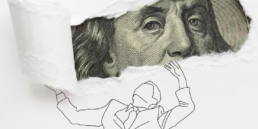See part II
Recycling paper in offices is such an old story you’d think we’d have it nailed by now. We haven’t. In my experience recycling bins in offices create only one type of behaviour; passive-aggressive all-staff notes about how the bins are being used incorrectly, or not at all. So why are they not used as the facilities manager expects?
Because (like most things in life untroubled by a behavioural understanding) navigating the ‘user options’ requires so much cognitive load the act of recycling is closer to a school exam than a simple bin-drop. This can be changed. Should be changed. Especially as the answers are fairly simple. And they are here.
But first, some facts.
In England the volume of waste that goes to landfill is over 45%. In Germany 1% of waste goes to landfill. In the USA, recycling rates are between 30% – 50% depending on the material (40% of physical space in US landfill is paper according to the EPA), and most of it’s done at home: offices lag. There’s definitely some work that can be done.
Over 60% of employees polled for Green Office Week say lack of empowerment, facilities, and communication are the key reasons why they’re not greener at work. Green Office Week is a flimsy carapace for Avery the office stationary people to ‘own’ greening the office (yawn) using a headline week (the perfect way to make it seem like an outsiders’ activity) that delivers information which (massively incorrectly) appeals to cognitive reason, and attitude.
If one could fillet this with a behavioural knife, the appeal to the lack of communication would remain as the only nourishing part. But even then, you’d have to strip out any communication effort other than the behavioural. [spoiler: there really isn’t any in the Green Week approach]
So, how do we do this bin stuff?
A trick that’s been long in the communications industry’s toolbox is to collapse the distance between an action and its outcome. And that’s exactly what San Francisco Company Golden Gate Disposal is doing with the names of their refuse bins. They call them landfill bins. And they take a consistent approach to this new classification at every point of communication: Tracy, a San Francisco resident, called Nancy at Golden Gate Disposal for a new garbage bin:
‘Ma’am, I have to tell you that we now call them landfill bins’
Is this enough?
James Kimmel of the Innovative Economics Initiative blog experimented with the ‘landfill’ label at the University of Pittsburgh (as documented by Fast Company Magazine too). For two weeks he had a yellow ‘landfill’ label (which included a smaller  reference to the local landfill center where the rubbish would be taken) on general waste bins. Overall recycling rates increased by 29%, and discarded recyclables decreased by 23%. Increasing recycling is one thing, but decreasing the rate of misplaced goods is vital, especially if food waste is involved. James hit on something that the National University of Singapore had, too.
reference to the local landfill center where the rubbish would be taken) on general waste bins. Overall recycling rates increased by 29%, and discarded recyclables decreased by 23%. Increasing recycling is one thing, but decreasing the rate of misplaced goods is vital, especially if food waste is involved. James hit on something that the National University of Singapore had, too.
All over Singapore – from the tourist areas to social housing estates – recycling bins are a common sight. They’re an important part of the National Environment Agency’s (NEA) commitment to increase recycling from +50% to 70%.
 The Singapore Straits Times investigated eighty recycling bins near their office and found food waste in all of them [hat tip: Nudge blog]. Food waste renders all of the contents unrecyclable. This wastes the social capital expended by those who do bother to recycle. The National University of Singapore (NUS) found a solution – they are
The Singapore Straits Times investigated eighty recycling bins near their office and found food waste in all of them [hat tip: Nudge blog]. Food waste renders all of the contents unrecyclable. This wastes the social capital expended by those who do bother to recycle. The National University of Singapore (NUS) found a solution – they are
“pairing every set of recycling bins with a trash bin”
ensuring those who are unsure, unwilling, or uninterested have an option that doesn’t ruin the efforts of those that recycle.
Why might we be unsure, unwilling, or uninterested? Is it an attitudinal thing?
Usually we throw things away while we’re doing something else – like chatting on mobile phone, chatting to friends, or thinking about where we’re going. And it’s this system 2 cognitive load that defers decisions to our impulsive system 1 thinking. How do you deal with that?
 psychology at Rutgers–Camden, and assistant professor at Indiana University) can tells us. They experimented by arranging bins side-by-side in ” . . . shaped bin lids reduced food-waste contamination by 95%. Ninety. Five. Per. Cent.”groups of three. They were all prominently stickered as ‘Trash’, ‘Aluminum-Glass-Plastic’, or ‘Paper’. Some groups-of-three all had open lids, replicating standard waste containers. Other groups-of-three had shaped lids: the ‘Trash’ option had a push-able flaps; ‘Aluminum-Glass-Plastic’ had a push-able flaps with a circular hole cut out of the centrer mirroring the shape of the expected drinks containers; ‘Paper’ had a lid with two slits. There were two sets of results: the first was amazing.
psychology at Rutgers–Camden, and assistant professor at Indiana University) can tells us. They experimented by arranging bins side-by-side in ” . . . shaped bin lids reduced food-waste contamination by 95%. Ninety. Five. Per. Cent.”groups of three. They were all prominently stickered as ‘Trash’, ‘Aluminum-Glass-Plastic’, or ‘Paper’. Some groups-of-three all had open lids, replicating standard waste containers. Other groups-of-three had shaped lids: the ‘Trash’ option had a push-able flaps; ‘Aluminum-Glass-Plastic’ had a push-able flaps with a circular hole cut out of the centrer mirroring the shape of the expected drinks containers; ‘Paper’ had a lid with two slits. There were two sets of results: the first was amazing.
– The shaped bin lids were shown to increase correct recycling by 35%.
That is a huge jump – rates of increase in the single digits would be received with excitement. But 35% is great. However, it’s overshadowed by the second set of results: if the first were amazing, the second were astounding.
– The shaped bin lids reduced food-waste contamination by 95%.
Ninety. Five. Per. Cent. And it does this by creating cognitive load: you have to stop and concentrate on what you’re doing to select a suitable hole. It requires your attention. This is enough to get to our 95% figure. Duffy and Verges say:
‘Placing an object through a small hole or narrow slit requires guided action and cognitive effort not required when simply discarding recyclables into recycling containers having wide openings.’
If you’re going to do only one thing, then this is it.
There are some experiments with ‘talking bins’. In Sweden VW’s Fun Theory built the ‘Världens Djupaste Soptunna’, or the ‘World’s Deepest Bin’. It express a cartoon-style sound of an object falling from a great height with every waste disposal effort, and collected nearly twice as much litter as a nearby un-doctored litter bin (72 kg versus 41 kg). However, this seems to be less about encouraging use than it is about reinforcing use for those who engage: the unheard sound fails to ‘prime the pump’. Perhaps that’s unfair, as in Berlin, Germany, they have aural bins that say either ‘Vielen danke/Thank you’ or ‘Welcome to Berlin’ when you deposit an item of rubbish about which Sepp Fiedler (who works at the company behind the idea) said to CNN: ‘The people like it. They pass them on the streets and start laughing because it’s unusual to have this sort of contact with a litter bin’
However, it’s hard to get away from the fact that they’re only retrospectively functional compared to Duffy & Verges shaped lids which shout ‘Yo! I’m for paper/cans/waste’, simply by the look/shape of the bin.
1. Name it (‘Landfill’ bin, etc)
2. Pair it (with a normal bin next to the recycling bin(s))
3. Shape it(’s aperture to mirror the intended item)
The most important thing about this approach? It works today, tomorrow, next week, next month, next year, and even next decade. Don’t do a green week. Don’t appeal to the rational. Do examine behavioural insights.
For more on this speak with us, or have a look at our capabilities
Also, as co-founders and supporters of the London Behavioural Economics Network, join the Meetup group and Facebook group for more details and events
Related Posts
August 13, 2023
Money (but not called that, and how it changes behaviour).
Advertising agencies make a lot of…
August 1, 2023
Reading ease is not as easy as all that – comprehension shows the way
It's easy to make text readable, right?…
July 20, 2023
The ‘Hollywood hello’ – and the importance of context when communicating
When communicating we all like to be as…
6 Comments
Add comment Cancel reply
This site uses Akismet to reduce spam. Learn how your comment data is processed.





[…] by Oliver Payne , 18/5/12 • The Hunter Blog • « Previous post | < Part […]
Hi Oliver – really useful and interesting article – one question that occurs – the examples you gave were all run seperately – is there an example which combines all three ideas (name, pair and shape) or would that not work? For example would people opt out of the extra cognitive load caused by shaping, if there was an easier option available, the paired trash bin?
More discussion and comments on LinkedIn http://www.linkedin.com/groupItem?view=&gid=6…
Excellent Blog!! I am impressed by your blog. It’s very informative and useful. Thanks for sharing.
Hello
YOU NEED QUALITY VISITORS FOR YOUR: thehuntingdynasty.com ?
WE PROVIDE HIGH-QUALITY VISITORS WITH:
– 100% safe for your site
– real visitors with unique IPs. No bots, proxies, or datacenters
– visitors from Search Engine (by keyword)
– visitors from Social Media Sites (referrals)
– visitors from any country you want (USA/UK/CA/EU…)
– very low bounce rate
– very long visit duration
– multiple pages visited
– tractable in google analytics
– custom URL tracking provided
– boost ranking in SERP, SEO, profit from CPM
CLAIM YOUR 24 HOURS FREE TEST HERE=> ventfara@mail.com
Thanks, Adelaida Capps
It’s basically a fantastic and beneficial piece of information. I’m glad that you merely shared this practical info with us. You should stay us updated like this. Many thanks for sharing. toyba.munhea.se/map6.php cykelhГҐllare fГ¶r bil utan dragkrok
http://movingrelocating44582.blue-blogs.com